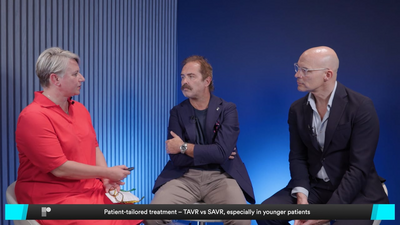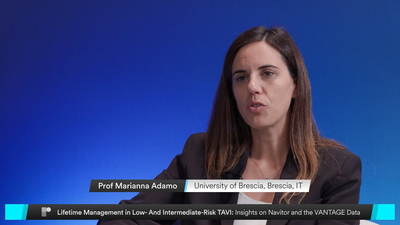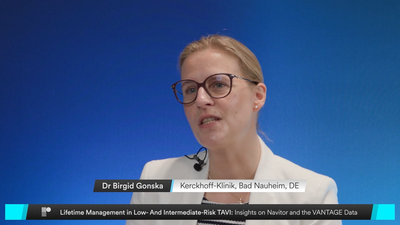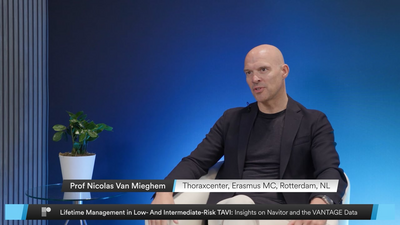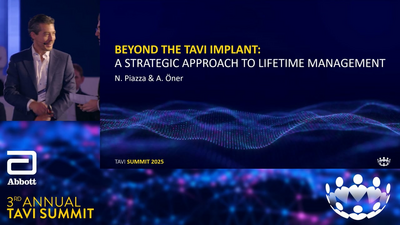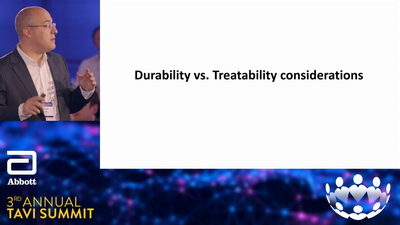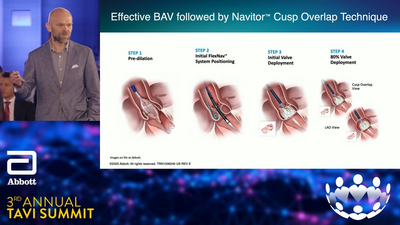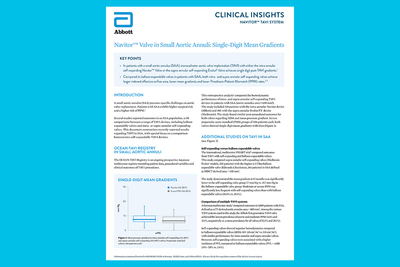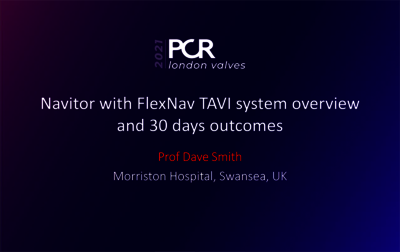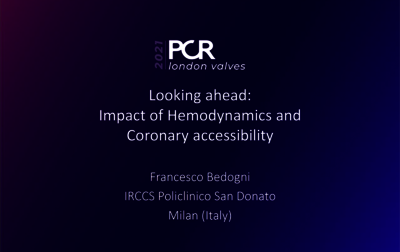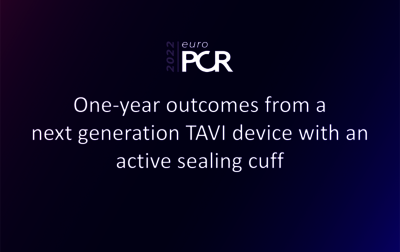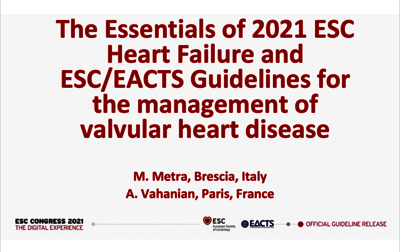Aortic Stenosis (AS) is the most common primary valve disease leading to surgery or catheter intervention in Europe and North America.1 It is present in approximately 2% of the general population with a rising prevalence in the elderly (up to 6% in patients above 85 years old).2-4
Symptomatic AS has significant effects on a patient’s health and quality of life5,6 and many will have cardiovascular and other comorbidities, for example, other valvular diseases, diabetes mellitus, hypertension and peripheral vascular disease.7-11
MEDICAL MANAGEMENT OF AS | SUMMARY OF CURRENT RELEVANT INTERNATIONAL GUIDELINES
2021 ESC/EACTS Guidelines for the Management of Valvular Heart Disease18
- No medical therapies influence the natural history of AS.
- Statins (which demonstrated favorable effects in pre-clinical studies) do not affect disease progression and clinical trials targeting calcium metabolic pathways are ongoing.
- Patients with HF who are unsuitable (or waiting) for SAVR or TAVI should be medically treated according to ESC heart failure Guidelines. ACEIs are safe in aortic stenosis (provided that blood pressure is monitored carefully) and may have beneficial myocardial effects before the onset of symptoms, and after TAVI and SAVR.
- Coexisting hypertension should be treated to avoid additional afterload, although medication (particularly vasodilators) should be titrated to avoid symptomatic hypotension.
2021 ESC Guidelines for the Diagnosis and Treatment of Acute and Chronic Heart Failure33
- No medical therapies for aortic stenosis can improve outcomes.
- HF medical treatment should be given to all heart failure patients with symptomatic severe aortic stenosis.
- Care must be taken using vasodilators to avoid hypotension.
- Importantly, possible improvement of symptoms after medical therapy should not delay intervention.
2020 ACC/AHA Guideline for the Management of Patients with Valvular Heart Disease34
- In patients at risk of developing AS (Stage A) and in patients with asymptomatic AS (Stages B and C), hypertension should be treated according to standard Guideline-Directed Management and Therapy, started at a low dose, and gradually titrated upward as needed, with appropriate clinical monitoring (1, B-NR).
- In all patients with calcific AS, statin therapy is indicated for primary and secondary prevention of atherosclerosis on the basis of standard risk scores. (1, A).
- In patients who have undergone TAVI, renin–angiotensin system blocker therapy (ACE inhibitor or ARB) may be considered to reduce the long-term risk of all-cause mortality (2B, B-NR).
- In patients with calcific AS (Stages B and C), statin therapy is not indicated for prevention of hemodynamic progression of AS (3 [no benefit], A).
Abbreviations: ACC, American College of Cardiology; ACEI, angiotensin-converting enzyme inhibitor; AHA, American Heart Association; ARB, angiotensin receptor blocker; AS, aortic stenosis; EACTS, European Association for Cardio-Thoracic Surgery; ESC, European Society of Cardiology; HF, heart failure; LV, left ventricle; LVEF, left ventricular ejection fraction; SAVR, surgical aortic valve replacement; TAVI, transcatheter aortic valve implantation; VHD, valvular heart disease.
MANAGEMENT OF AS | SUMMARY OF CURRENT RELEVANT INTERNATIONAL GUIDELINES
2021 ESC/EACTS Guidelines for the Management of Valvular Heart Disease18
Asymptomatic patients
- Intervention is recommended in asymptomatic patients with severe aortic stenosis and systolic LV dysfunction (LVEF <50%) without another cause (class I, B).
- Intervention is recommended in asymptomatic patients with severe aortic stenosis and demonstrable symptoms on exercise testing (class I, C).
- Intervention should be considered in asymptomatic patients with severe aortic stenosis and systolic LV dysfunction (LVEF <55%) without another cause (class IIa, B).
- Intervention should be considered in asymptomatic patients with severe aortic stenosis and a sustained fall in BP (>20 mmHg) during exercise testing (class IIa, C).
- Intervention should be considered in asymptomatic patients with LVEF >55% and a normal exercise test if the procedural risk is low and one of the following parameters is present:
- Very severe aortic stenosis (mean gradient ≥60 mmHg or Vmax >5 m/s).
- Severe valve calcification (ideally assessed by CCT) and Vmax progression ≥0.3 m/s/year.
- Markedly elevated BNP levels (>3 x age- and sex-corrected normal range) confirmed by repeated measurements and without other explanation (class IIa, B).
Symptomatic patients
- Intervention is recommended in symptomatic patients with severe, high-gradient aortic stenosis [mean gradient ≥40 mmHg, peak velocity ≥4.0 m/s, and valve area ≤1.0 cm2 (or ≤0.6 cm2/m2)] (class I, B).
- Intervention is recommended in symptomatic patients with severe low-flow (SVi ≤35 mL/m2), low-gradient (<40 mmHg) aortic stenosis with reduced ejection fraction (<50%), and evidence of flow (contractile) reserve (class I, B).
- Intervention should be considered in symptomatic patients with low-flow, low-gradient (<40 mmHg) aortic stenosis with normal ejection fraction after careful confirmation that the aortic stenosis is severed (class IIa, C).
- Intervention should be considered in symptomatic patients with low-flow, low-gradient severe aortic stenosis and reduced ejection fraction without flow (contractile) reserve, particularly when CCT calcium scoring confirms severe aortic stenosis (class IIa, C).
- Intervention is not recommended in patients with severe comorbidities when the intervention is unlikely to improve quality of life or prolong survival >1 year. (class III, C).
Mode of intervention- Aortic valve interventions must be performed in heart valve centers that declare their local expertise and outcomes data, have active interventional cardiology and cardiac surgical programmes on site, and a structured collaborative heart team approach (class I, level C).
- The choice between surgical and transcatheter intervention must be based upon careful evaluation of clinical, anatomical, and procedural factors by the heart team, weighing the risks and benefits of each approach for an individual patient. The heart team recommendation should be discussed with the patient who can then make an informed treatment choice (class I, level C).
- SAVR is recommended in younger patients who are low risk for surgery (<75 years and STS-PROM/ EuroSCORE II <4%), or in patients who are operable and unsuitable for transfemoral TAVI (class I, level B).
- TAVI is recommended in older patients (≥75 years), or in those who are high risk (STS-PROM/ EuroSCORE IIf >8%) or unsuitable for surgery (class I, level A).
- SAVR or TAVI are recommended for remaining patients according to individual clinical, anatomical, and procedural characteristics (class I, level B).
- Non-transfemoral TAVI may be considered in patients who are inoperable and unsuitable for transfemoral TAVI (class IIb, level C).
2021 ESC Guidelines for the Diagnosis and Treatment of Acute and Chronic Heart Failure33
- Aortic valve intervention, TAVI or SAVR is recommended in patients with HF and severe high-gradient AS to reduce mortality and improve symptoms (class I).
- It is recommended that the choice between TAVI and SAVR be made by the heart team, according to individual patient preference and features including age, surgical risk, clinical, anatomical and procedural aspects, weighing the risks and benefits of each approach (class I).
2020 ACC/AHA Guideline for the Management of Patients with Valvular Heart Disease34
- For symptomatic and asymptomatic patients with severe AS and any indication for aortic valve replacement who are <65 years of age or have a life expectancy >20 years, SAVR is recommended (1A).
- For symptomatic patients with severe AS who are 65 to 80 years of age and have no anatomic contraindication to transfemoral TAVI, either SAVR or transfemoral TAVI is recommended after shared decision making about the balance between expected patient longevity and valve durability (1A).
- For symptomatic patients with severe AS who are >80 years of age or for younger patients with a life expectancy <10 years and no anatomic contraindication to transfemoral TAVI, transfemoral TAVI is recommended in preference to SAVR (1A).
- In asymptomatic patients with severe AS and an LVEF <50% who are ≤ 80 years of age and have no anatomic contraindication to transfemoral TAVI, the decision between TAVI and SAVR should follow the same recommendations as for symptomatic patients in Recommendations 1, 2, and 3 above (1, B-NR).
- For asymptomatic patients with severe AS and an abnormal exercise test, very severe AS, rapid progression, or an elevated BNP (COR 2a indications for AVR), SAVR is recommended in preference to TAVI (1, B-NR).
- For patients with an indication for aortic valve replacement for whom a bioprosthetic valve is preferred but valve or vascular anatomy or other factors are not suitable for transfemoral TAVI, SAVR is recommended (1A).
- For symptomatic patients of any age with severe AS and a high or prohibitive surgical risk, TAVI is recommended if predicted post-TAVI survival is >12 months with an acceptable QoL (1A).
- For symptomatic patients with severe AS for whom predicted post-TAVI or post-SAVR survival is <12 months or for whom minimal improvement in QoL is expected, palliative care is recommended after shared decision-making, including discussion of patient preferences and values (1, C-EO).
- In critically ill patients with severe AS, percutaneous aortic balloon dilation may be considered as a bridge to SAVR or TAVI (2b, C-EO).
Abbreviations: ACC, American College of Cardiology; ACEI, angiotensin-converting enzyme inhibitor; AHA, American Heart Association; ARB, angiotensin receptor blocker; AS, aortic stenosis; AVR, aortic valve replacement; BNP, B-type natriuretic peptide; BP, blood pressure; CCT, cardiovascular computed tomography; COR, class of recommendation; EACTS, European Association for Cardio-Thoracic Surgery; ESC, European Society of Cardiology; HF, heart failure; LV, left ventricle; LVEF, left ventricular ejection fraction; QoL, quality of life; SAVR, surgical aortic valve replacement; STS-PROM, Society of Thoracic Surgeons predicted risk of mortality; SVi, stroke volume index; TAVI, transcatheter aortic valve implantation; VHD, valvular heart disease; Vmax, peak transvalvular velocity.
Clinical case clubs | Educational tools | Hot topics
Expert opinions | Live & online discussions
TV
HUB
- Falk V, Baumgartner H, Bax JJ et al. 2017 ESC/EACTS Guidelines for the management of valvular heart disease. Eur J Cardiothorac Surg. 2017;52(4):616–664. doi.org/10.1093/ejcts/ezx324.
- Lindroos M, Kupari M, Heikkilä J et al. Prevalence of aortic valve abnormalities in the elderly: an echocardiographic study of a random population sample. J Am Coll Cardiol. 1993;21(5):1220–1225. doi.org/10.1016/0735-1097(93)90249-Z.
- Osnabrugge RLJ, Mylotte D, Head SJ et al. Aortic stenosis in the elderly: disease prevalence and number of candidates for transcatheter aortic valve replacement: a meta-analysis and modeling study. J Am Coll Cardiol. 2013;62(11):1002–1012. doi.org/10.1016/j.jacc.2013.05.015.
- d'Arcy JL, Coffey S, Loudon MA et al. Large-scale community echocardiographic screening reveals a major burden of undiagnosed valvular heart disease in older people: the OxVALVE Population Cohort Study. Eur Heart J. 2016;37(47):3515–3522. doi.org/10.1093/eurheartj/ehw229.
- van Geldrop MWA, Heuvelman HJ, Kappetein AP et al. Quality of life among patients with severe aortic stenosis. Neth Heart J. 2013;21(1):21–27. doi.org/10.1007/s12471-012-0364-9.
- Oterhals K, Haaverstad R, Nordrehaug JE et al. Self-reported health status, treatment decision and survival in asymptomatic and symptomatic patients with aortic stenosis in a Western Norway population undergoing conservative treatment: a cross-sectional study with 18 months follow-up. BMJ Open. 2017;7(8):e016489. dx.doi.org/10.1136/bmjopen-2017-016489.
- Iung B, Baron G, Tornos P et al. Valvular heart disease in the community: a European experience. Curr Probl Cardiol. 2007;32(11):609–661. doi.org/10.1016/j.cpcardiol.2007.07.002.
- Faggiano P, Frattini S, Zilioli V et al. Prevalence of comorbidities and associated cardiac diseases in patients with valve aortic stenosis. Potential implications for the decision-making process. Int J Cardiol. 2012;159(2):94–99. doi.org/10.1016/j.ijcard.2011.02.026.
- Maisano F, Worthley S, Rodés-Cabau J et al. Early commercial experience from transcatheter aortic valve implantation using the Portico™ bioprosthetic valve: 30-day outcomes in the multicentre PORTICO-1 study. EuroIntervention. 2018;14(8):886–893. doi.org/10.4244/EIJ-D-18-00343.
- Reardon MJ, Van Mieghem NM, Popma JJ et al. Surgical or transcatheter aortic-valve replacement in intermediate-risk patients. N Engl J Med. 2017;376(14):1321–1331. doi.org/10.1056/NEJMoa1700456.
- Leon MB, Smith CR, Mack MJ et al. Transcatheter or surgical aortic-valve replacement in intermediate-risk patients. N Engl J Med. 2016;374(17):1609–1620. doi.org/10.1056/NEJMoa1514616.
- Olszowska M. Pathogenesis and pathophysiology of aortic valve stenosis in adults. Pol Arch Med Wewn. 2011;121(11):409–413. www.mp.pl/paim/issue/article/1103/.
- Czarny MJ et al. Diagnosis and management of valvular aortic stenosis. Clin Med Insights Cardiol. 2014;8(Suppl 1):15–24. doi.org/10.4137/CMC.S15716.
- Nishimura RA, Otto CM, Bonow RO et al. 2014 AHA/ACC guideline for the management of patients with valvular heart disease: a report of the American College of Cardiology/American Heart Association Task Force on Practice Guidelines. J Thorac Cardiovasc Surg. 2014;148(1):e1–e132. doi.org/10.1016/j.jtcvs.2014.05.014.
- Zakkar M, Bryan AJ, Angelini GD. Aortic stenosis: diagnosis and management. BMJ. 2016;355:i5425. doi.org/10.1136/bmj.i5425.
- Indolfi C, Bartorelli AL, Berti S et al. Updated clinical indications for transcatheter aortic valve implantation in patients with severe aortic stenosis: expert opinion of the Italian Society of Cardiology and GISE. J Cardiovasc Med (Hagerstown). 2018;19(5):197–210. doi.org/10.2459/JCM.0000000000000636.
- Grimard BH, Safford RE, Burns EL. Aortic stenosis: diagnosis and treatment. Am Fam Physician. 2016;93(5):371–378. www.aafp.org/pubs/afp/issues/2016/0301/p371.html.
- Vahanian A, Beyersdorf F, Praz F et al. 2021 ESC/EACTS Guidelines for the management of valvular heart disease. Eur Heart J. 2022;43(7):561–632. doi.org/10.1093/eurheartj/ehab395
- Kanwar A, Thaden JJ, Nkomo VT. Management of patients with aortic valve stenosis. Mayo Clin Proc. 2018;93(4):488-508. doi.org/10.1016/j.mayocp.2018.01.020.
- “Aortic Valve Stenosis - Diagnosis and Treatment - Mayo Clinic.” Aortic Valve Stenosis - Diagnosis and Treatment - Mayo Clinic, 18 August 2022, www.mayoclinic.org/diseases-conditions/aortic-stenosis/diagnosis-treatment/drc-20353145 (accessed May 2023).
- Ram E, Sternik L, Lipey A, et al. Clinical and echocardiographic outcomes after aortic valve repair in patients with bicuspid or unicuspid aortic valve. Isr Med Assoc J. 2018;20(7):423–428. www.ima.org.il/FilesUploadPublic/IMAJ/0/294/147319.pdf.
- Martín M, Lorca R, Rozado J, et al. Bicuspid aortic valve syndrome: a multidisciplinary approach for a complex entity. J Thoracic Dis. 2017;9(Suppl 6):S454–S464. doi.org/10.21037/jtd.2017.05.11.
- Généreux P, Stone GW, O'Gara PT et al. Natural history, diagnostic approaches, and therapeutic strategies for patients with asymptomatic severe aortic stenosis. J Am Coll Cardiol. 2016;67(19):2263–2288. doi.org/10.1016/j.jacc.2016.02.057.
- Lund O. Preoperative risk evaluation and stratification of long-term survival after valve replacement for aortic stenosis. Reasons for earlier operative intervention. Circulation. 1990;82(1):124–139. doi.org/10.1161/01.CIR.82.1.124.
- Nashef SA, Roques F, Sharples LD et al. EuroSCORE II. Eur J Cardiothorac Surg. 2012;41(4):734–744;discussion 744–745. doi.org/10.1093/ejcts/ezs043.
- Roques F, Michel P, Goldstone AR et al. The logistic EuroSCORE. Eur Heart J. 2003;24(9):881–882. doi.org/10.1016/S0195-668X(02)00799-6.
- Roques F, Nashef SA, Michel P et al. Risk factors and outcome in European cardiac surgery: analysis of the EuroSCORE multinational database of 19030 patients. Eur J Cardiothorac Surg. 1999;15(6):816–822;discussion 822–823. doi.org/10.1016/S1010-7940(99)00106-2.
- Thourani VH, Suri RM, Gunter RL et al. Contemporary real-world outcomes of surgical aortic valve replacement in 141,905 low-risk, intermediate-risk, and high-risk patients. Ann Thorac Surg. 2015;99(1):55–61. doi.org/10.1016/j.athoracsur.2014.06.050.
- Brown JM, O’Brien SM, Wu C et al. Isolated aortic valve replacement in North America comprising 108,687 patients in 10 years: changes in risks, valve types, and outcomes in the Society of Thoracic Surgeons National Database. J Thorac Cardiovasc Surg. 2009;137(1):82–90. doi.org/10.1016/j.jtcvs.2008.08.015.
- Culler SD, Cohen DJ, Brown PP et al. Trends in aortic valve replacement procedures between 2009 and 2015: has transcatheter aortic valve replacement made a difference? Ann Thorac Surg. 2018;105(4):1137–1143. doi.org/10.1016/j.athoracsur.2017.10.057.
- O'Brien SM, Shahian DM, Filardo G et al. The Society of Thoracic Surgeons 2008 cardiac surgery risk models: part 2--isolated valve surgery. Ann Thorac Surg. 2009; 88(1 Suppl):S23–42. doi.org/10.1016/j.athoracsur.2009.05.056.
- Durko AP, Osnabrugge RL, Kappetein AP. Long-term outlook for transcatheter aortic valve replacement. Trends Cardiovasc Med. 2018;28(3):174–183. doi.org/10.1016/j.tcm.2017.08.004.
- McDonagh TA, Metra M, Adamo M et al. 2021 ESC Guidelines for the diagnosis and treatment of acute and chronic heart failure. Eur Heart J. 2021;42(36):3599–3726. doi.org/10.1093/eurheartj/ehab368.
- Filardo G, Hamilton C, Hamman B et al. New-onset postoperative atrial fibrillation and long-term survival after aortic valve replacement surgery. Ann Thorac Surg. 2010;90(2):474–479. doi.org/10.1016/j.athoracsur.2010.02.081.


